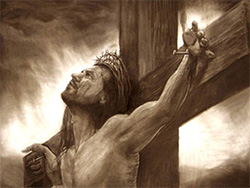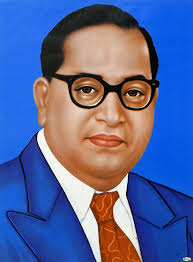
Good Friday
 Good Friday is also called Holy Friday, Black Friday, and Great Friday. It is a solemn day in the Christian calendar, which is meant to commemorate the passion, suffering and death of Jesus Christ. A day of prayer and penance, the bells of the churches remain silent on Good Friday. The cross of Jesus, also called the cross of sorrow, holds great importance on this day. Good Friday is also called Holy Friday, Black Friday, and Great Friday. It is a solemn day in the Christian calendar, which is meant to commemorate the passion, suffering and death of Jesus Christ. A day of prayer and penance, the bells of the churches remain silent on Good Friday. The cross of Jesus, also called the cross of sorrow, holds great importance on this day.
Jesus fasted for forty days in the desert, before He began His preaching. Thereafter, He taught the need of prayer and fasting to overcome the Evil One. Good Friday marks the end of the 40-day period of fasting and renunciation during Lent, which recalls the days Jesus spent in the desert. After this period, Jesus returned to Jerusalem, and was welcomed as the King of the Jews. The wholehearted acceptance of Jesus by the people made the rulers fear that they would lose the people's loyalty, and prompted them to plot against Him.
With the help of Judas, who betrayed Jesus for thirty pieces of silver, Jesus was arrested for treason and condemned to be crucified. This happened on Maundy Thursday, a day before Good Friday. The next day (which is now known as Good Friday) became the darkest day in Christianity. On this very day, Jesus was made to carry the cross, on which he was later crucified as well. Jesus, by his act of forgiving and praying for even those responsible for his death, won a victory for good over evil.
The Roman Catholic Church observes Good Friday with several long-standing traditions today. It is a day of fasting and the altars of the churches are made without candles. The Liturgy of the Word, the Veneration of the Cross and Holy Communion also takes place on this day. The practice of austerities has always been considered important in Christian spirituality and this is especially followed on Good Friday, since it is a day of mourning, a day on which Jesus sacrificed his life for the sake of humanity.
The death of Christ on the Cross was so entirely against human calculations to establish a kingdom, or to initiate a world movement of liberation, that this event alone can be said to be an argument to prove the divinity of Christ. Man-made-gods were always victorious kings or warriors, who carried out their mission by destroying their enemies through the use of force. Jesus stands unique, as the only Son of God who saved humankind by accepting death at the hands of His enemies. Jesus did not come to kill, but to be killed. Through His sacrifice on the Cross, He destroyed the power of the devil, the real enemy of humanity.
Evil Conquered by Goodness
Mary, standing near the Cross, associated herself in the closest possible way with the sacrifice of Jesus, her only son. The message of Good Friday is that evil can never be conquered by evil, but only by goodness, violence by non-violence, hatred by love for the enemy. Jesus stood for these ideals and reiterated them, while being crucified. The cross of Jesus is symbolic of the suffering one may have to face when standing for the right principles, but also stresses the fact that this should not deviate from the right path, as good always wins over evil in the end.
The Church follows three days of mourning, Maundy Thursday, Good Friday and Holy Saturday which then culminates in Easter which is that Jesus rose bodily from the dead that first Easter morning ensuring that we who have been baptized into His death and resurrection will rise again in glorified bodies on the Last Day. This is the great paschal mystery that Christians have celebrated since the earliest days of the church. As the apostle Paul joyfully declared: ...Christ has been raised from the dead, the first fruits of those who have fallen asleep. For as by a man came death, by a man has come also the resurrection of the dead. For as in Adam all die, so also in Christ shall all be made alive...
"O death, where is your victory? O death, where is your sting?" The sting of death is sin, and the power of sin is the law. But thanks be to God, who gives us the victory through our Lord Jesus Christ! (1 Corinthians 15:20-22 and 55-57). On Easter Sunday therefore, while secular society occupies itself with eggs and rabbits, the Christian church celebrates God's great triumph over sin, death, and the devil with the ancient greeting:
Alleluia! Christ is risen!
He is risen indeed! Alleluia!
Wishing you a Joyful and Happy Easter!
Source: Internet
Ambedkar Jayanti
A Tribute to Dr. B. R. Ambedkar
 Dr. Bhimrao Ramji Ambedkar popularly known as Babasaheb was born on 14 April 1891. He was an Indian jurist, economist, politician and social reformer who inspired the Dalit Buddhist movement and campaigned against social discrimination against Untouchables (Dalits), while also supporting the rights of women and labour.
Dr. Bhimrao Ramji Ambedkar popularly known as Babasaheb was born on 14 April 1891. He was an Indian jurist, economist, politician and social reformer who inspired the Dalit Buddhist movement and campaigned against social discrimination against Untouchables (Dalits), while also supporting the rights of women and labour.
He was Independent India's first law minister and the principal architect of the Constitution of India. The text prepared by Ambedkar provided constitutional guarantees and protections for a wide range of civil liberties for individual citizens, including freedom of religion, the abolition of untouchability, and the outlawing of all forms of discrimination. Ambedkar argued for extensive economic and social rights for women, and won the Assembly's support for introducing a system of reservations of jobs in the civil services, schools and colleges for members of scheduled castes and scheduled tribes and Other Backward Class, a system akin to affirmative action. India's lawmakers hoped to eradicate the socio-economic inequalities and lack of opportunities for India's depressed classes through these measures. The Constitution was adopted on 26 November 1949 by the Constituent Assembly.
Ambedkar was a prolific student, earning a law degree and various doctorates from Columbia University and the London School of Economics, and gained a reputation as a scholar for his research in law, economics and political science.
In his early career, he was an economist, professor, and lawyer. His later life was marked by his political activities; he became involved in campaigning and negotiations for India's independence, publishing journals advocating political rights and social freedom for Dalits, and contributing significantly to the establishment of the state of India. In 1956 he converted to Buddhism, initiating mass conversions of Dalits.
Ambedkar's legacy as a socio-political reformer had a deep effect on modern India. In post-Independence India, his socio-political thought is respected across the political spectrum. His initiatives have influenced various spheres of life and transformed the way India today looks at socio-economic policies, education and affirmative action through socio-economic and legal incentives. His reputation as a scholar led to his appointment as free India's first law minister, and chairman of the committee for drafting the constitution. He passionately believed in individual freedom and criticised caste society.
Since 1954-55 Ambedkar was suffering from serious health problems including diabetes and weak eyesight. On 6 December, 1956 he died at his home in Delhi. A Buddhist-style cremation was organized for him. The ceremony was attended by thousands of supporters, activists and admirers. In 1990, the Bharat Ratna, India's highest civilian award, was posthumously conferred upon Ambedkar.
Many public institutions are named in his honour, and the Dr. Babasaheb Ambedkar International Airport in Nagpur, otherwise known as Sonegaon Airport. Dr. B. R. Ambedkar National Institute of Technology, Jalandhar is also named in his honour. A large official portrait of Ambedkar is on display in the Indian Parliament building. In popular culture, several movies, plays, and other works have been based on the life and thoughts of Ambedkar.
Source: Internet
Quote for the day
“A new command I give you: Love one another. As I have loved you, so you must love one another.”
- Jesus Christ
|
|
| Campus Buzz is the daily e-Newsletter of Sahyadri Educational Institutions |
|
|
